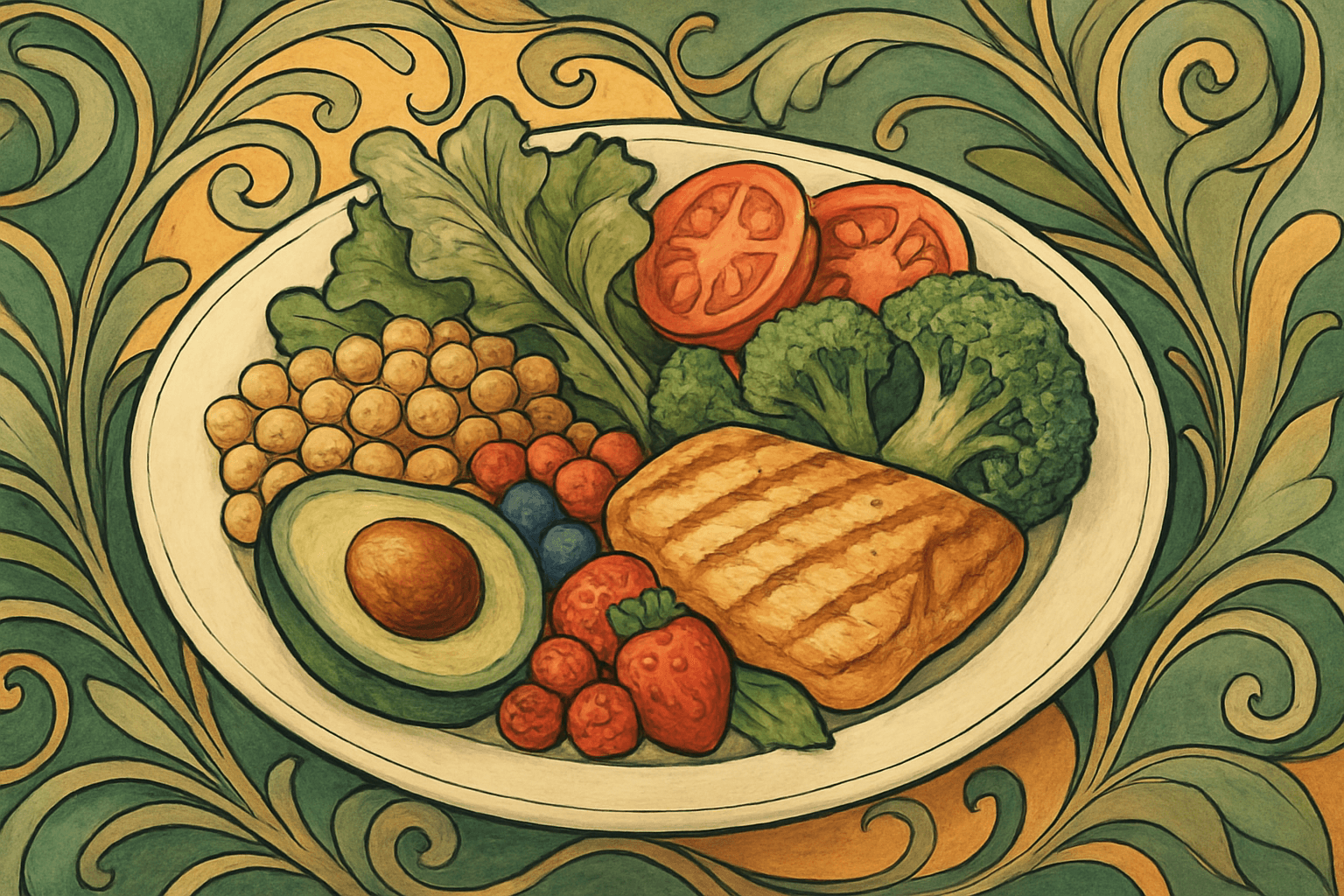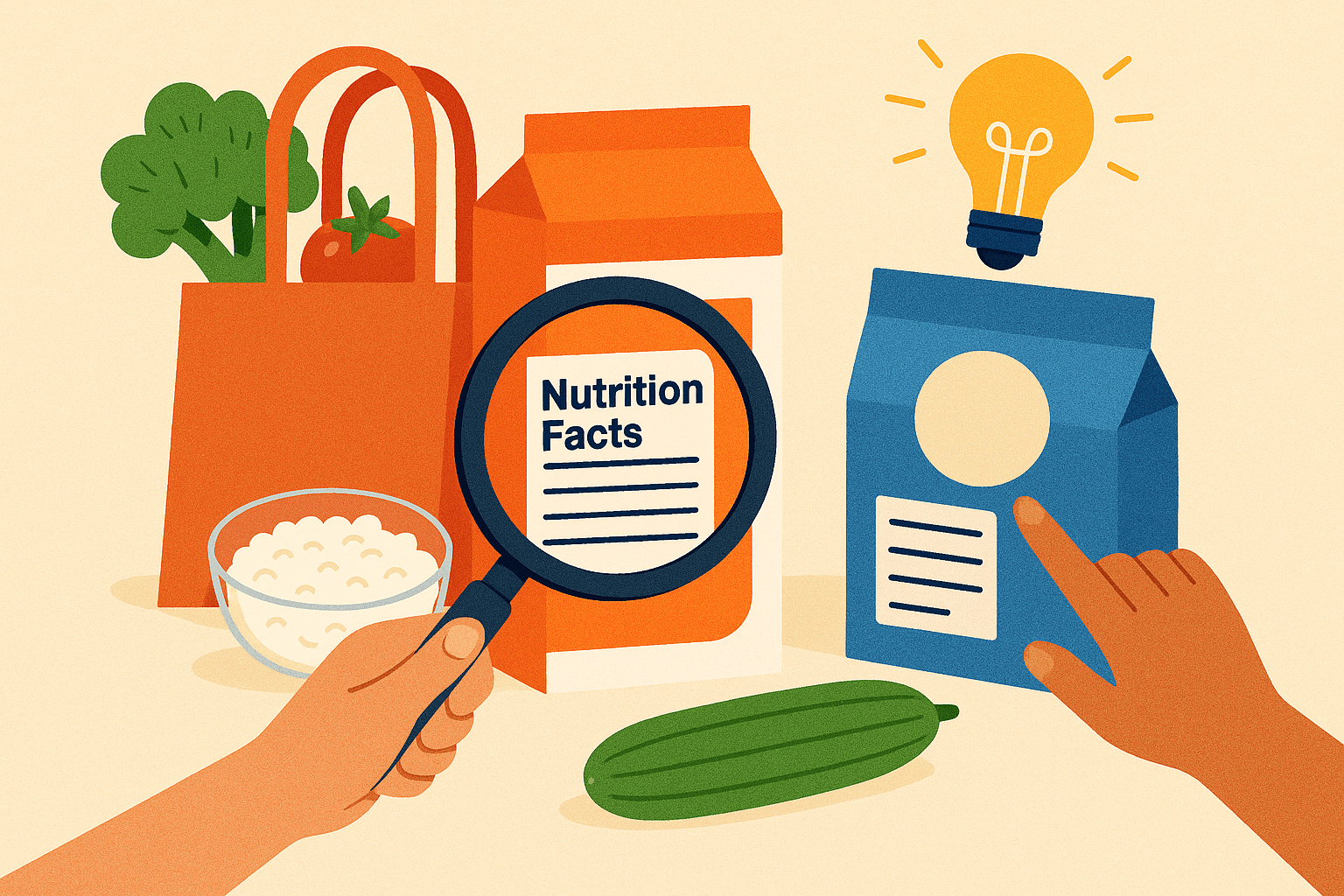Beyond the Plate: The Real Science of Healthy Eating That Lasts
Published on June 13, 2025

Why Healthy Eating Has to Start with Biology, Not Trends
Forget kale fads and calorie counters. Your body wants one thing: balance. Every bite you take either supports or disrupts that internal equilibrium. Real health starts with understanding:
Macronutrients at WorkProtein – Builds muscle, supports hormones, promotes fullness. Must be consumed regularly.
Carbs – Primary fuel for brain and muscles. Choose complex carbs (lentils, oats, veg) over refined.
Fats – Essential for brain, hormones, and vitamin absorption. Think olive oil, avocado, nuts.
Ideal plate formula:
40–50% non-starchy vegetables
20–25% lean protein
20–25% complex carbs
5–10% healthy fats
Plus: hydration, fiber, and variety
Micronutrient Deficiency — The Hidden Risk
You can hit your macros and still feel off. Why? Missing micronutrients like:
Iron
Iodine
Vitamin D
Folate
Magnesium
Zinc
B vitamins
Without them, energy, mood, metabolism, and immunity suffer.
What Healthy Eating Is NOT
Myth: Carbs make you fat
Truth: Excess calories do. Whole carbs = fiber + nutrients.
Myth: Fat should be feared
Truth: Healthy fats support hormones, satiety, brain power.
Myth: 6 meals/day is a must
Truth: Meal frequency is personal. What matters is total quality.
Myth: You must count every calorie
Truth: Nutrient density matters more than numbers alone.
Myth: Eating healthy is expensive
Truth: Beans, oats, frozen veggies, and eggs = budget-friendly power
Myth: Your favorite foods are banned
Truth: Flexibility and portion awareness win long term
Myth: Supplements replace food
Truth: Real food is irreplaceable in complexity and synergy
Nutrient Density vs. Empty Calories
100 calories of broccoli = fiber + folate + antioxidants
100 calories of soda = sugar only
Real, whole foods always win
Choose:
Bright fruits and vegetables
Lean proteins
Whole grains
Healthy fats
Avoid:
Refined flours
Added sugars
Preservatives
Seed oils
Tip: If it rots, it's probably real. If it shouts “healthy,” it’s likely ultra-processed.
Blood Sugar Stability: The Real Secret Sauce
Stable blood sugar supports:
Energy
Mood
Hormonal balance
Appetite control
Longevity
Top tactics:
Combine carbs with fat or protein
Eat slow carbs: lentils, whole grains
Start meals with fiber and protein
Add vinegar to meals
Walk 10 min after eating
Avoid skipping meals and sugar bombs
The Gut-Brain Axis: Your Invisible Ally
Your gut is a mood modulator and immune controller. Protect it by:
Getting 25–35g fiber/day
Eating fermented foods (if tolerated)
Staying hydrated
Avoiding unnecessary antibiotics
Managing stress
Eating slowly
Sleeping well
Using prebiotics: garlic, onions, bananas, leeks
(Consider probiotics if recommended)
Real-Life Nutrition Habits That Stick
Batch-cook grains, proteins, veggies
Keep staples stocked: eggs, beans, greens
Default meals (grain bowls, stir-fries)
Learn 5 base recipes, remix weekly
Use frozen produce, canned fish
Prep breakfasts/snacks in advance
Use a grocery list
Follow the half-plate veggie rule
Apply the “plate model” even to takeout
How You Eat Matters Too
Sit down, no screens
Chew and savor
Respect fullness
No food guilt
Eat with intention
Ask: “How do I want to feel after this?”
Taste with presence
10 Promising Rules to Follow
Focus on nourishment, not restriction
Prioritize consistency, not perfection
Embrace color diversity in meals
Stay hydrated
Batch-cook weekly
Include protein in every meal
Use fat wisely
Eat mostly whole foods
Simplify your grocery list
Listen to your body
Final Thoughts: Fuel with Intention
Healthy eating isn’t a finish line — it’s a lifestyle rooted in curiosity and care. Stop chasing “clean eating” and start eating with purpose. Each meal is a chance to show your body that it matters.
Choose food that honors your biology and your goals. Real nourishment isn’t just about fuel — it’s about building a life you feel good living.
So eat like you plan to last. Because you do.








